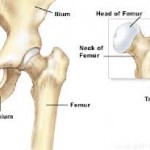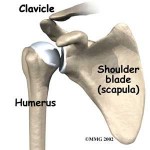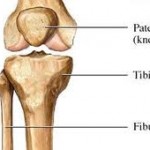 “The body is a bundle of careful compromises” ~R. Nesse & G. Williams, Why We Get Sick
“The body is a bundle of careful compromises” ~R. Nesse & G. Williams, Why We Get Sick
Nothing exemplifies that statement better than your joints, the designs of which boil down to exactly that: a compromise. It’s an issue of stability versus mobility– each joint a trade-off between structural sturdiness and maneuverability. And since each attribute inevitably comes at the expense of the other, a joint’s function ultimately determines the final balance.
The hip and the shoulder joints represent the two extremes of the spectrum well.

Figure 1: HIP, the ball (seen fully in upper right) almost disappears into the hip socket on the pelvis (left)
The hip, a joint meant primarily for load-bearing, needs to be stable above all else. The shoulder, on the other hand (bad pun intended), requires extraordinary mobility to perform its complex tasks. Both are ‘ball and socket’ type joints; yet with a deep socket that practically envelopes the ball of the thigh bone (femur), the hip (Fig 1) is as structurally stable as it gets. You won’t often hear of someone dislocating his/her hip, unless they’ve had the joint surgically replaced. On the other extreme, the shoulder (fig 2) has a very shallow socket into which the arm (humerus) fits, giving it about as much structural stability as a golf ball on a tee. In exchange, however, that sucker can move! Up over your head, behind your back, across your chest, in circles, in figure-8’s–don’t get me wrong, the hip’s got decent movement….but it’s no shoulder.
Clearly, no joint has complete stability or complete mobility; usually both are present to varying degrees. The notable standout is the knee (Fig 3) which has no appreciable stability or mobility to brag about. Structurally, it’s just one bone (the femur, or thigh bone) sitting atop another one (the tibia, or shin bone). And in exchange for that lack of stability, all you get is a joint that does little more than move back and forth like a hinge. Frankly, it’s the joint we got gipped on. Other major joints fall somewhere in the middle of the spectrum.
So why should you care?
- Less stability = more motion = more wear and tear = more injury (including more arthritis). This in part accounts for why shoulder arthritis is more prevalent than elbow arthritis, and knee arthritis more common than hip: the shoulder’s far more mobile than the elbow, and the knee’s far less stable than the hip.
- A joint with less inherent stability will always depend more on surrounding structures like muscles and ligaments to stabilize it. This means not only that strong muscles are especially important to protect less stable joints like the shoulder and knee, but also that those joints are particularly susceptible to ligament and muscle injuries. A lot of rotator cuff and ACL tears out there…
- This concept is particularly relevant to the spine. As barely more than a loosely stacked column of small, oval bones, the spine has very little innate stability when stripped of its ligaments and supporting muscles. Perhaps you’ve heard of these supporting muscles…they’re known as your core. And now you know at least one reason it gets as much hype as it does!
N.B.: This posting simply compares the structural design of joints as individual stand-alone units; it is not speaking to each joint’s functional role within the kinetic chain. And that’s probably a distinction worth highlighting. For instance, on a stand-along basis, the hip has tremendous structural stability for weight-bearing purposes, but it also has tremendous mobility to satisfy its role within the full-body kinetic chain (hip mobility is crucial for spine/core stability). It’s an impressive balance actually. So, just wanted to mention the issue since I’ve gotten a couple comments on the matter (well, one was a comment…the other was more like an empassioned attack by a reader whose functional sensibilities I so offended by this confusion that she felt the need to differentiate herself from me by claiming to be a “real doctor”).



6 Comments
One Ping
Pingback: There’s More to Balance Than Meets the Eye |